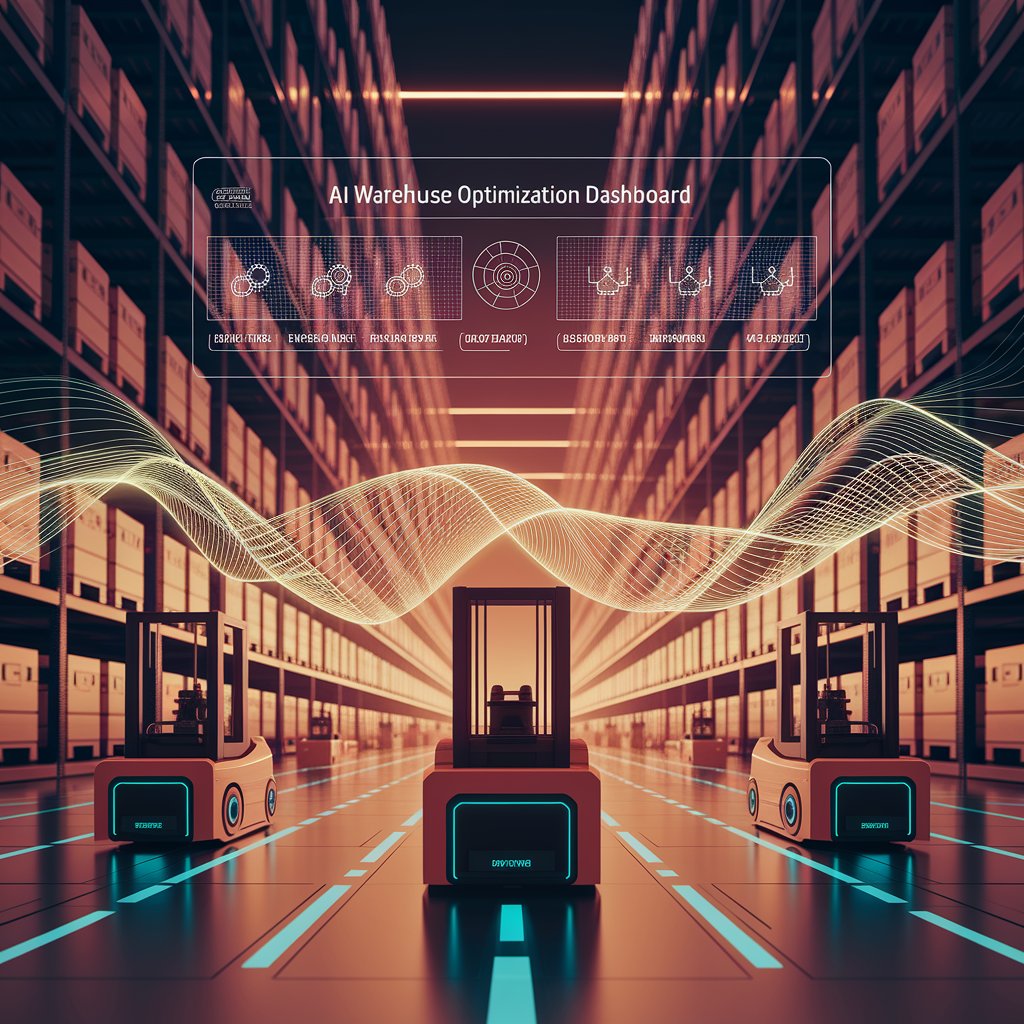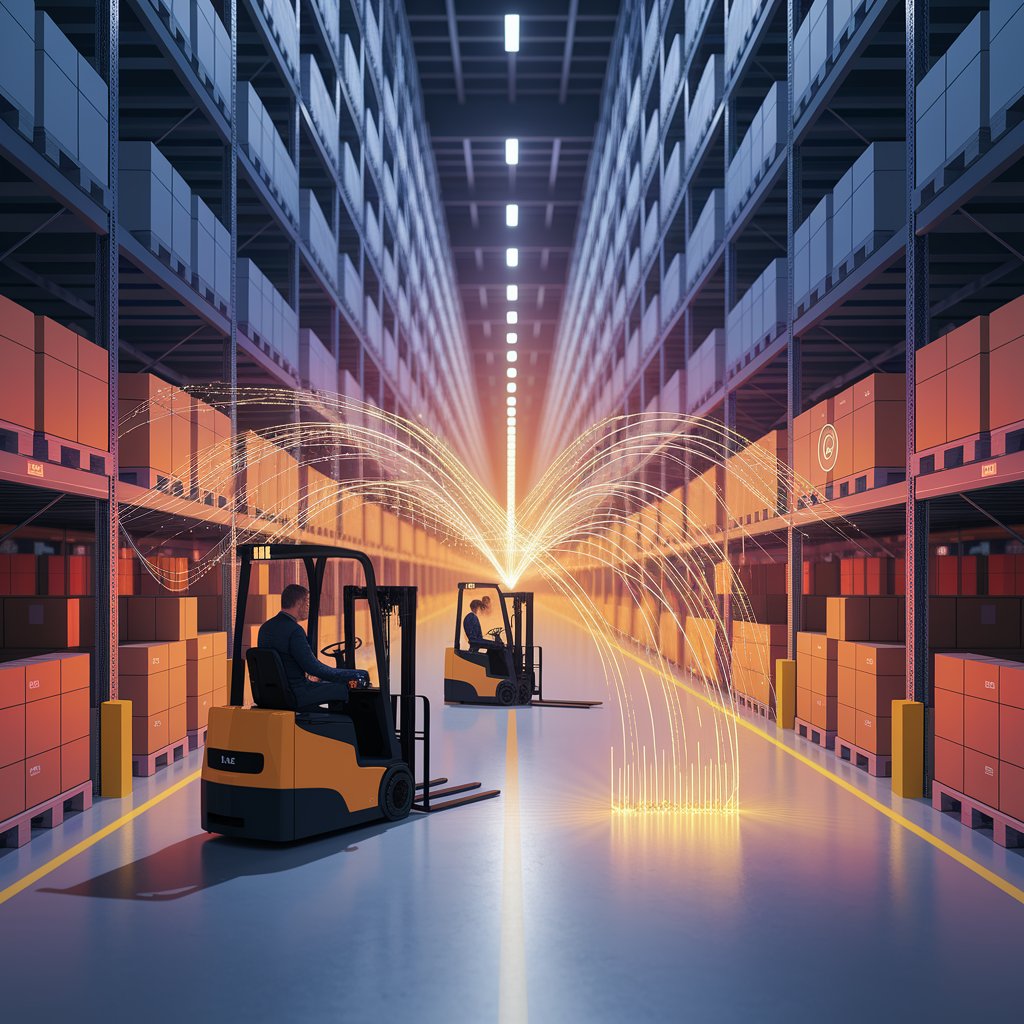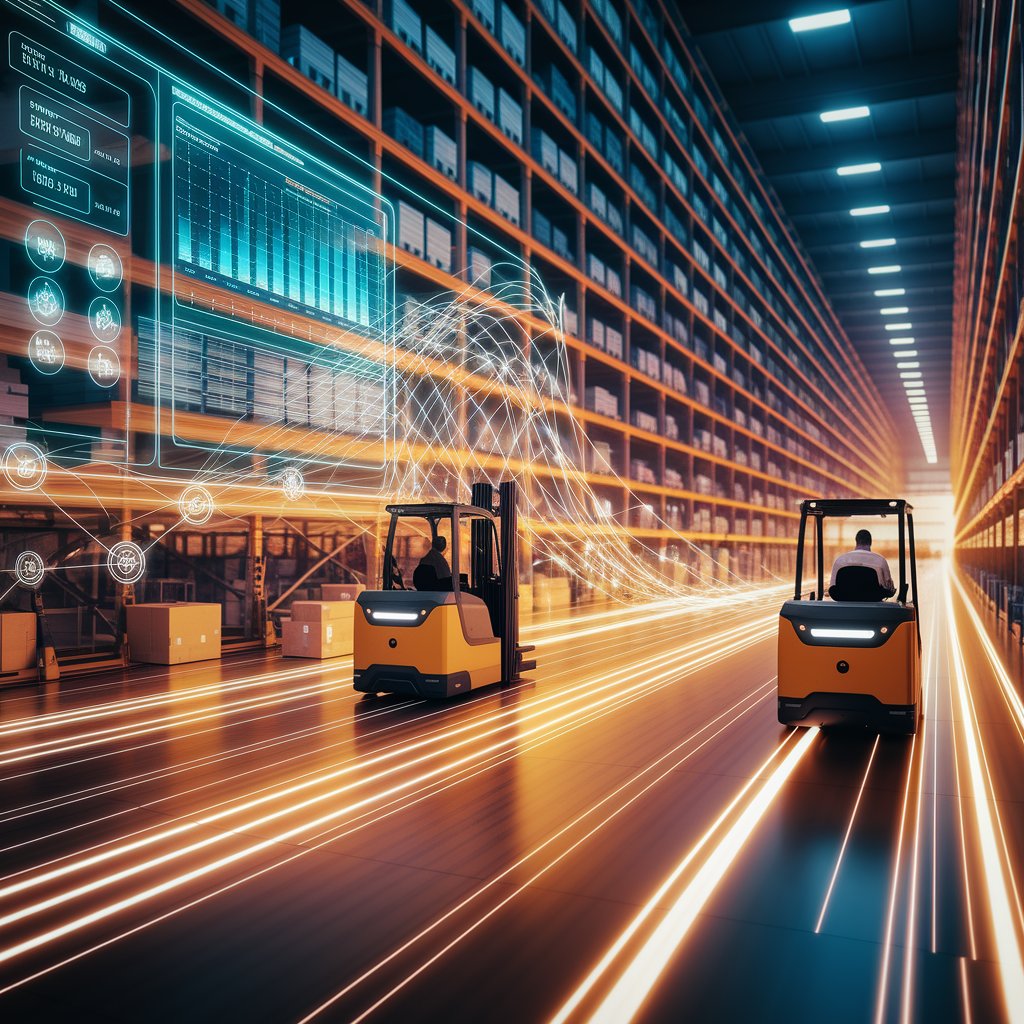AI Warehouse Optimization: Smarter Operations for the Future of Logistics

Introduction
Traditional warehouse management systems (WMS) rely heavily on static rules and manual oversight. In contrast, AI warehouse optimization brings intelligence, agility, and automation to operations, helping logistics providers scale smarter and faster.
What Is AI Warehouse Optimization?
AI warehouse optimization is the application of artificial intelligence, machine learning, and predictive analytics to improve warehouse performance. Unlike traditional systems that react to events, AI anticipates demand, automates workflows, and adapts operations in real time.
It optimizes critical areas such as:
- Inventory management – Balancing stock to avoid shortages or overstocking.
- Labor scheduling – Allocating workforce dynamically based on demand.
- Storage utilization – Optimizing space through AI-driven layout adjustments.
- Order fulfillment – Automating picking and packing decisions for speed and accuracy.
- Equipment efficiency – Predicting maintenance needs to avoid downtime.

Key Features of AI Warehouse Optimization
- Dynamic Slotting – AI determines the best storage location for each SKU.
- Labor Allocation Algorithms – Assigns workers based on workload and priority orders.
- Predictive Inventory Management – Forecasts demand for better stock control.
- Automated Picking Optimization – Reduces travel time inside warehouses.
- IoT Integration – Sensors track assets, equipment health, and environmental conditions.
- Real-Time Dashboards – Provide managers with live operational insights.
Benefits of AI Warehouse Optimization 📈
- Efficiency Gains – Faster order fulfillment and reduced idle time.
- Cost Reduction – Lower labor, storage, and equipment expenses.
- Improved Accuracy – Reduced errors in picking, packing, and inventory counts.
- Resilience – Adapt quickly to demand fluctuations and supply disruptions.
- Customer Satisfaction – Faster deliveries and fewer order errors.
- Sustainability – Optimized storage and workflows reduce energy and waste.

Real-World Applications
- E-commerce Fulfillment Centers – Handle millions of SKUs with automated slotting.
- 3PL Providers – Improve service levels while scaling client operations.
- Cold Chain Warehouses – Balance energy use with strict temperature requirements.
- Manufacturing Logistics – Align inbound parts and materials with production schedules.
- Retail Distribution Centers – Speed up replenishment cycles for stores.
Challenges in AI Warehouse Optimization
- Integration with Legacy Systems – Older WMS platforms may not support AI modules.
- High Implementation Costs – AI solutions and IoT infrastructure require investment.
- Data Dependency – Poor or inconsistent data reduces optimization accuracy.
- Workforce Resistance – Staff may hesitate to trust AI-driven scheduling.
- Cybersecurity Risks – Sensitive warehouse data must be secured.

Best Practices for Success
- Start with High-Impact Areas – Apply AI to slotting or labor scheduling first.
- Ensure Data Accuracy – Standardize SKU, inventory, and order data.
- Integrate Across Systems – Connect AI with ERP, WMS, and IoT platforms.
- Combine AI with Human Oversight – Use AI for optimization, humans for decision validation.
- Train Workforce – Prepare staff to work with AI-driven workflows.
- Measure ROI Continuously – Track improvements in cost, speed, and accuracy.
The Future of AI Warehouse Optimization 🚀
- Fully Autonomous Warehouses – AI coordinating robots, drones, and AGVs.
- Digital Twin Warehouses – Simulating layouts and processes in real time.
- Blockchain-Backed Transparency – Securing inventory records and workflows.
- Edge AI in Warehouses – Decisions made instantly on-site for faster operations.
- Sustainability-First Optimization – AI prioritizing energy efficiency and waste reduction.
Conclusion
AI warehouse optimization is revolutionizing logistics by turning warehouses into intelligent, adaptive ecosystems. By leveraging AI, predictive analytics, and automation, companies can improve efficiency, cut costs, and strengthen resilience in their supply chains.
For e-commerce, 3PLs, and global shippers, adopting AI warehouse optimization isn’t just about efficiency—it’s the key to building future-ready logistics operations.
